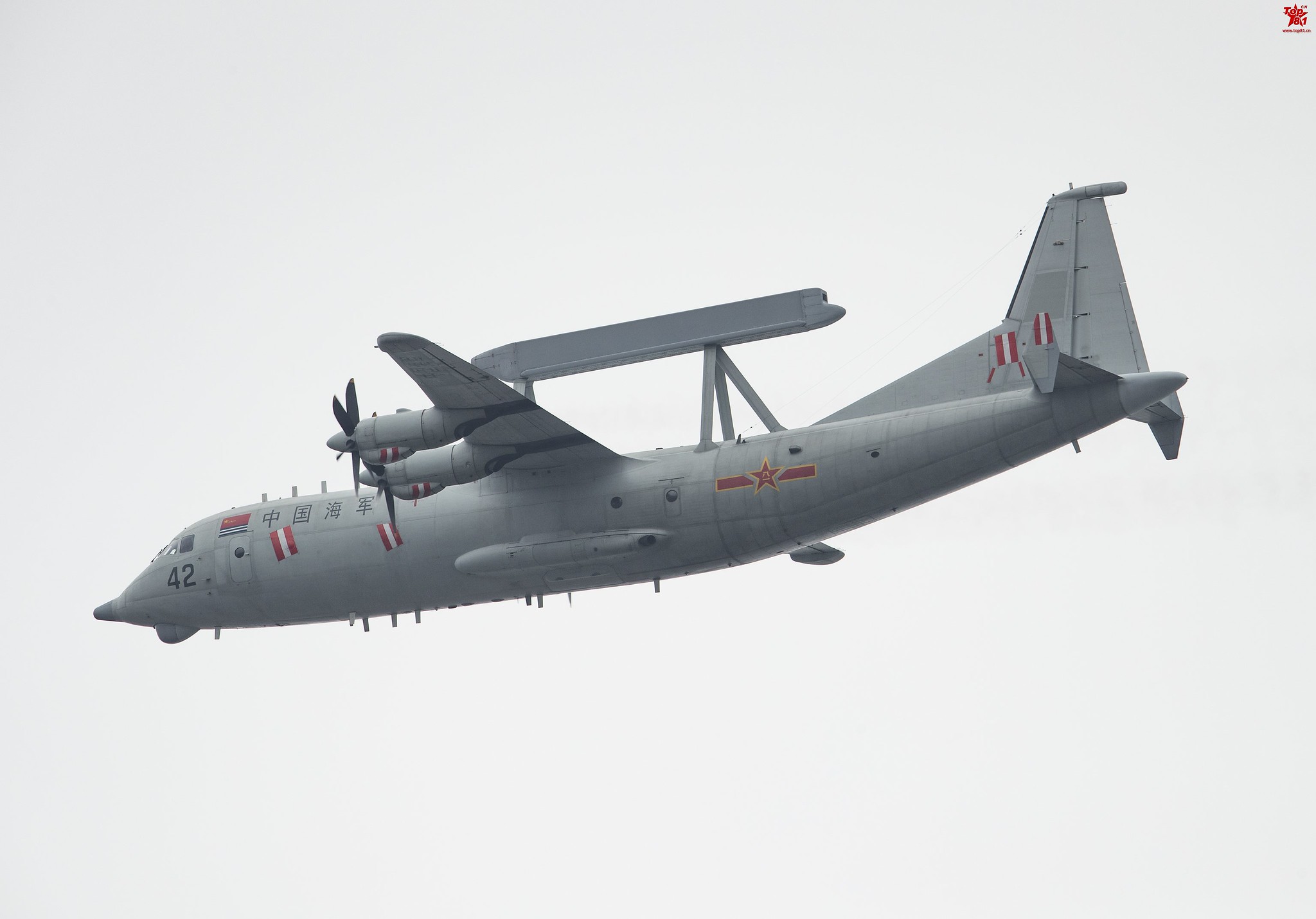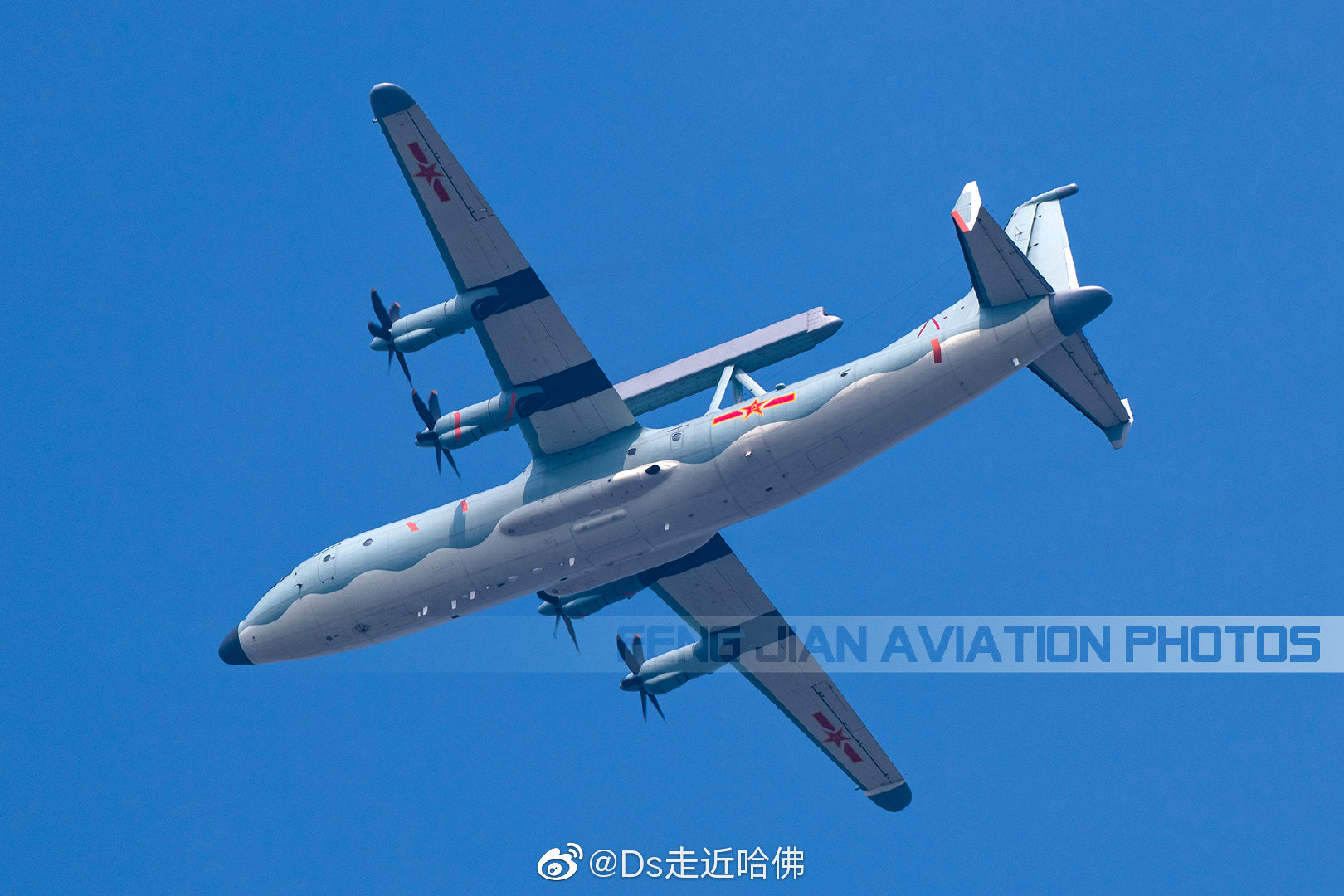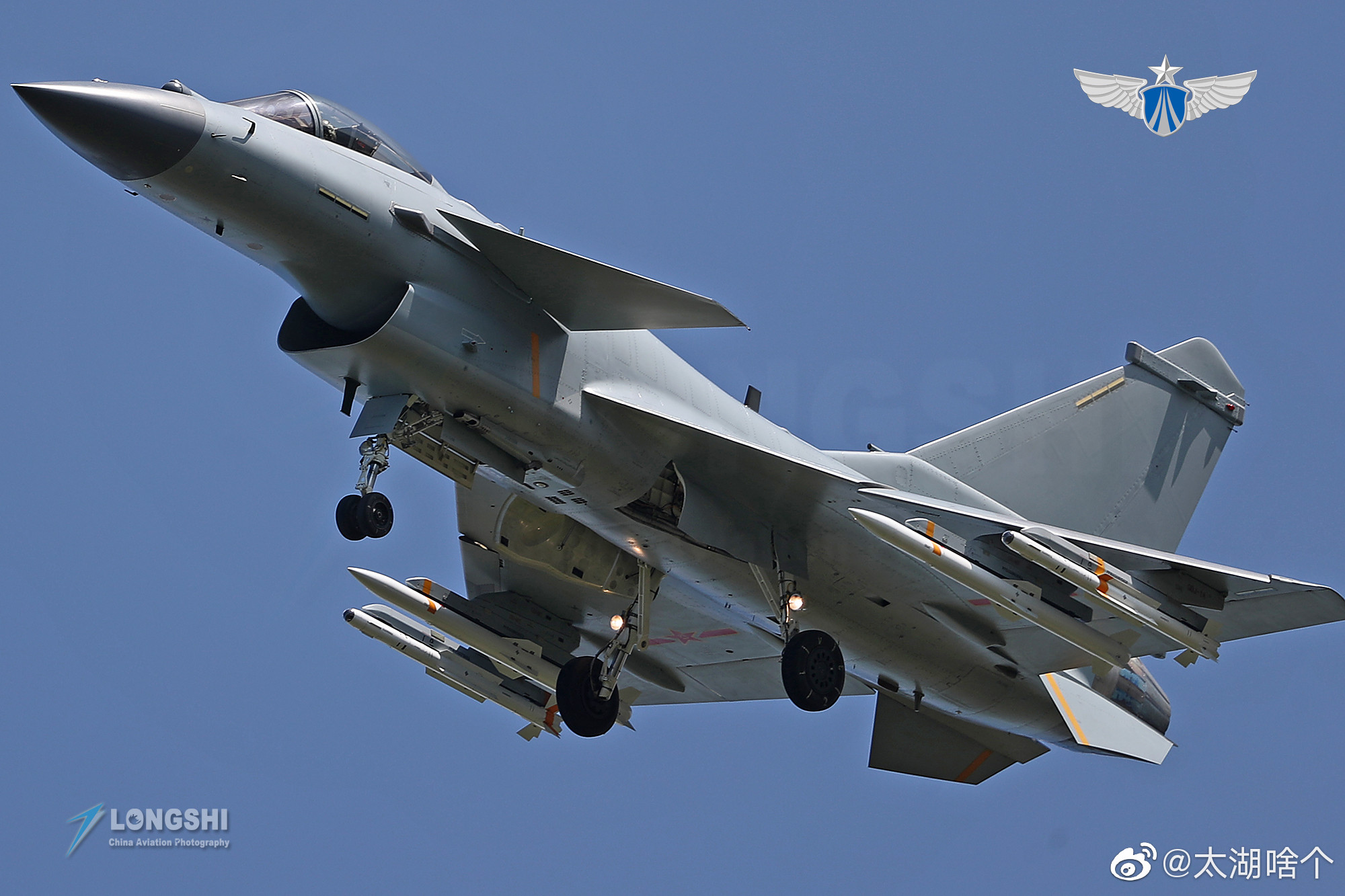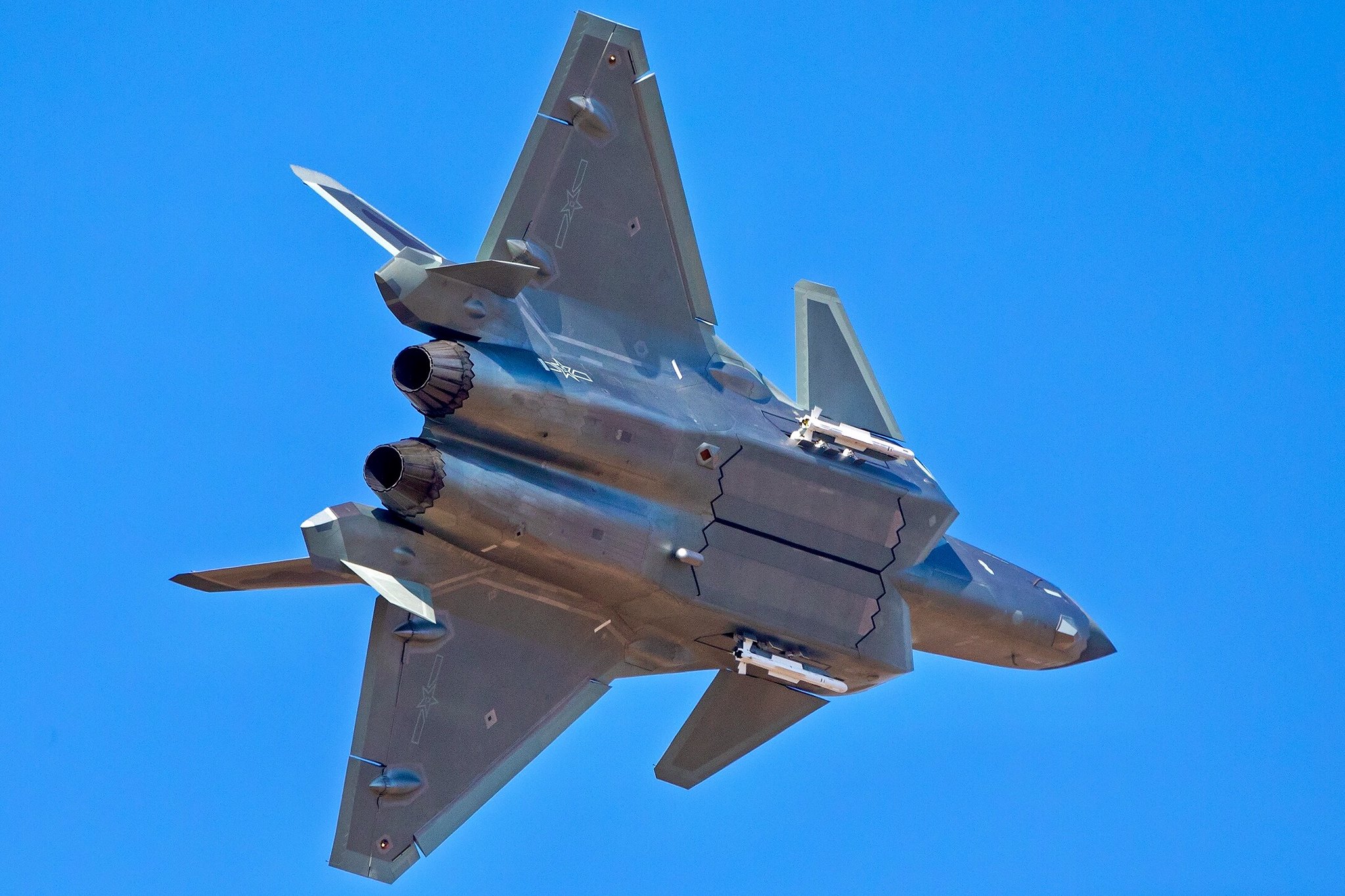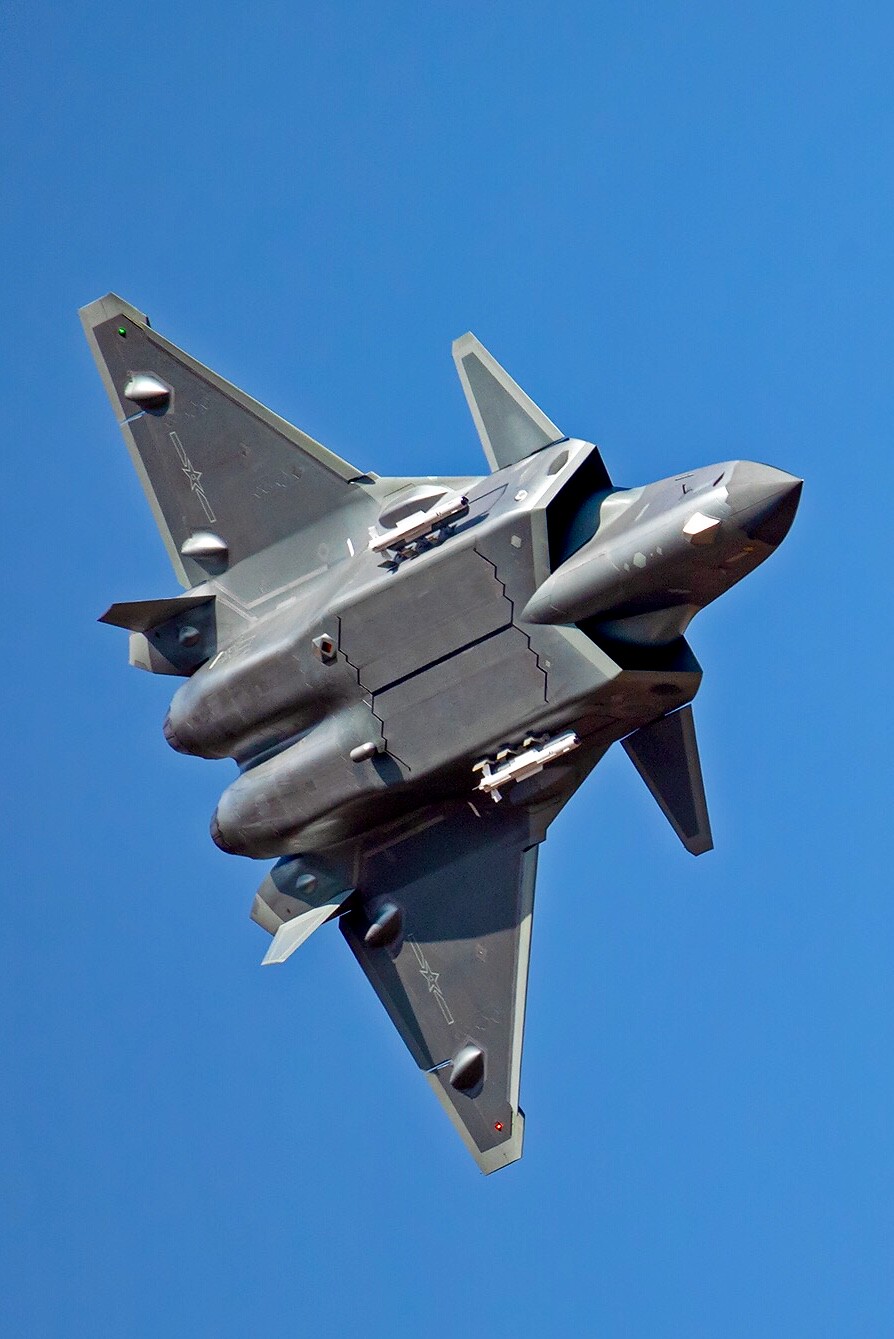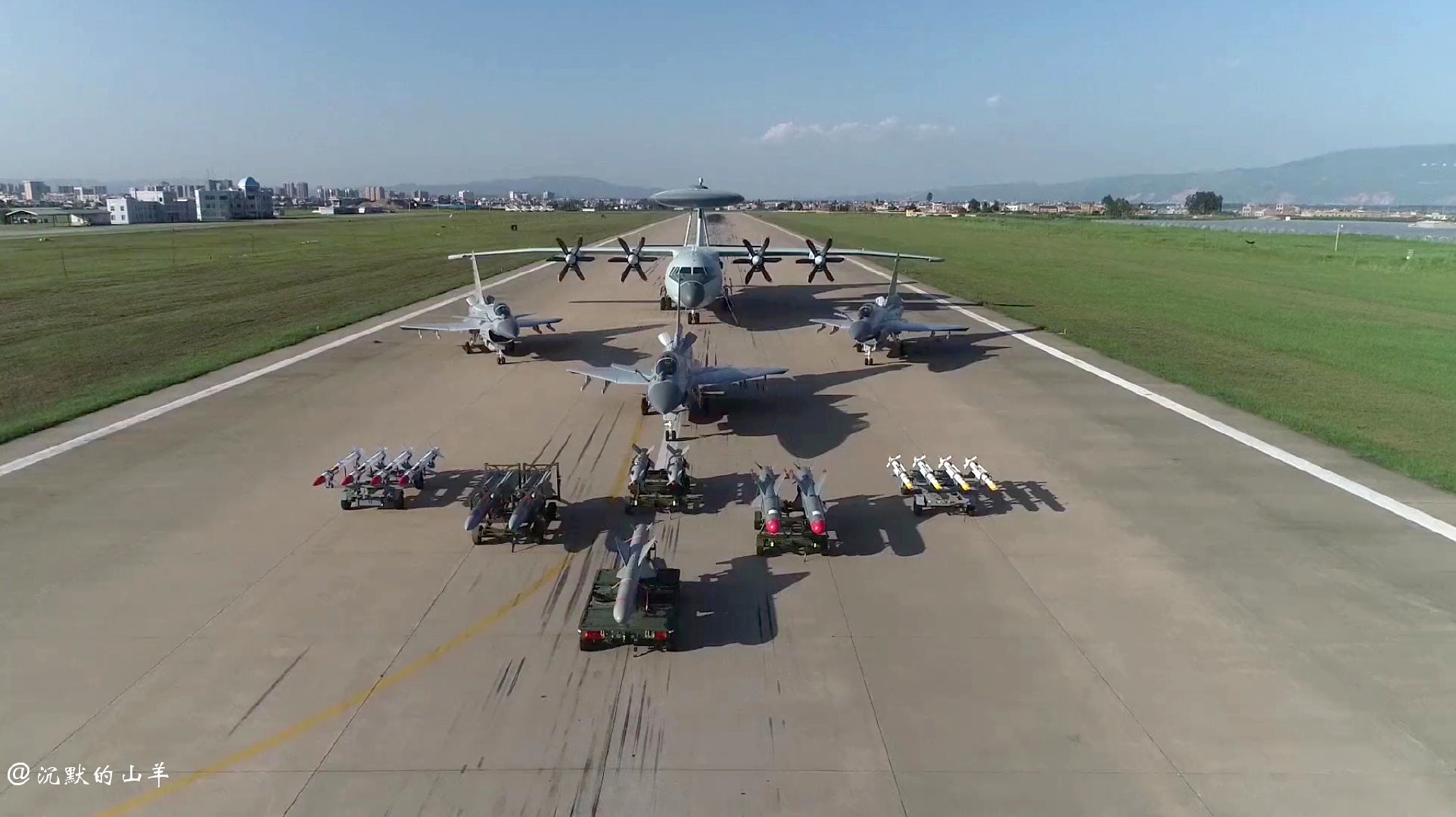People's Liberation Army Air Force : News & Discussions
- Thread starter Aashish
- Start date
You are using an out of date browser. It may not display this or other websites correctly.
You should upgrade or use an alternative browser.
You should upgrade or use an alternative browser.
Do you remember there was an US helo that crashed during the Bin Laden mission ? That was also a version of the Black Hawk right ? Something to ponder on.Is it my imagination, or is a near exact copy of a UH-60 Black Hawk?

That was a prototype of a stealth copter. This isn't stealth.Do you remember there was an US helo that crashed during the Bin Laden mission ? That was also a version of the Black Hawk right ? Something to ponder on.
And the article clearly mentions it closely resembles the Sikorsky S-70, you nanny goat. Don't you read or having read don't you comprehend what's written? Or is it another case of pilot signal versus "pilot" Signal with a lame - " I was being facetious " To follow.Is it my imagination, or is a near exact copy of a UH-60 Black Hawk?
Not yet. But who knows it might become one. The US stealth copter was also based on the Black Hawk wasn't it ?That was a prototype of a stealth copter. This isn't stealth.
The fact that the Chinese helo is Black Hawk "inspired" says something about its probable evolution the Chinese might take.
Didn't need to, just looked at the picture and knew. You spent 5 minutes to obtain the same information I gleaned in 5 milliseconds.And the article clearly mentions it closely resembles the Sikorsky S-70, you nanny goat. Don't you read or having read don't you comprehend what's written? Or is it another case of pilot signal versus "pilot" Signal with a lame - " I was being facetious " To follow.
ELEVATOR INPUTS
Figures 3.1A and 3.1B show control surface movements and tail forces for conventional and V-tails respectively in response to a pull on the yoke. Dashed lines represent the fixed stabilizers and solid lines represent the movable control surfaces. The view is from the rear.

With a conventional tail, only the elevators move. Their up-travel accelerates the air on the underside of the horizontal tail, reducing the pressure there and raising the pressure above the tail. The result is a down force from the tail. This is shown in Figure 3.1A by the force vector labeled S = E to denote that the sum of the forces (S) comes exclusively from the elevator (E).
When a V-tail Bonanza pilot pulls on the yoke, both ruddervators deflect as shown in Figure 3.1B. This causes the left tail member to pull down and left and the right member to pull down and right. The sum of the forces, S, is straight down, with the yaw effects from left and right ruddervators (L and R) exactly canceling. A push on the yoke works similarly.
RUDDER INPUTS
Figures 3.2A and 3.2B show right rudder pedal inputs. In the conventional tail, the rudder moves to the right. This creates a low pressure area (or "lift") on the left side of the vertical tail, which draws the tail left or yaws the nose right about the airplane's center of gravity. The sum of the forces (S) is due to rudder (U) only.

Right rudder pedal input in the V-tail will lower the right ruddervator and raise the left one. The effect is an up and left force from the right tail member and a down and left force from the left member. The sum (S) of the left and right tail forces (L and R) has the effect of pushing the tail left.
COMBINED ELEVATOR-RUDDER INPUTS
Figure 3.3A shows control surface positions and tail forces for a conventional tail when the yoke is back and the right rudder is depressed. The elevator force (E) is taildown, and the rudder force (U) is tail-left. The sum (S) of forces is tail down and left or nose up and right.

On the V-tail, the left ruddervator will be up, and the right ruddervator will be up less than the left or perhaps even down depending upon the size of the yoke and rudder displacements. Thus, the sum of the forces is, as on the conventional tail, tail-down and left or nose up and right.
The following facts from the Shop Manual for the V35B illustrate how the control mixer and ruddervator stops allow differential ruddervator displacement. With full up elevator and no rudder input, the left ruddervator will be 22 1/2 degrees up. With full right rudder and elevator neutral, the left ruddervator will be 23 degrees up. And with full up elevator and right rudder simultaneously, the left ruddervator will be 44 degrees up. By contrast, the elevator of the A36 is limited to 23 degrees up and 20 degrees down, while the rudder is limited to 25 degrees left or right.
source
Simple Aerodynamics Of The V-Tail
Embarrassing mistake: Chinese magazine ‘accidentally’ reveals new top secret weapon
A centrefold graphic recently flourished intimate details of a Chinese bomber carrying a stark new weapon. State-controlled media has since gone into cover-up mode. But military analysts think Beijing may have been caught with its pants down.
The government produced Modern Ships magazine has splashed high-resolution computer-generated images of China’s most recent addition to its strategic bomber line-up – the H-6N – over the front and feature pages.
But that’s not what drew the eye of the world’s defence thinkers.
The graphics showed the new bomber carrying a huge ballistic missile slung under its fuselage. And that missile looks a lot like one of a family of ballistic weapons deployed by China’s People’s Liberation Army Rocket Force (PLARF) as aircraft carrier killers.

The bomber pictured looks to be carrying a huge ballistic missile unlike any China has produced before. Picture: SuppliedSource:Supplied
Beijing’s state-controlled Global Times immediately went into damage control mode, declaring, “The images are computer generated, merely conceptual and have no official background.”
But there’s far more to the story than the detailed conceptual images.
And this may confirm Western defence analysts’ worst fears.
“If (this) is correct then this would be an impressive anti-ship standoff capability for the PLA (People’s Liberation Army), that would extend the utility of the DF-21D out well beyond the first island chain,” Australian Strategic Policy Institute analyst Malcolm Davis told Flight Global.
“That would theoretically match the ground-launched DF-26 anti-ship capable (intermediate ballistic missile), and increase the risk for US aircraft carrier battle groups … the Chinese are clearly trying to make it costlier for the US to project power into the western pacific, to the point where the US simply chooses not to intervene in a crisis.”

The detailed plans that appeared as Modern Ships’ centrefold. Picture: SuppliedSource:Supplied
OUT OF THE ORDINARY
Defence enthusiasts noted several strange things about the latest N variant of China’s Xian H-6 series of strategic bombers when it was unveiled to the public at the 70th National Day parade in October.
The state-controlled Xinhua news service simply said it was a “homemade strategic bomber capable of air refuelling and long-range strike”.
But when a flight of three of the bombers flew over Beijing, military experts saw it doesn’t have bomb-bay doors. Instead, it has what appears to be new heavyweight attachment points in a recess along the centre-line of its fuselage.
Also noted was its modified, extended nose-cone and an air-to-air refuelling nozzle.
Speculation as to what this all meant was rife.
Most observers settled on a disturbing prospect: that these changes enabled the bomber to carry huge, nuclear-capable or hypersonic-speed ballistic missiles.
If correct, it would become only the second nation to do so.

The cover of the issue of Modern Ships magazine showing the allegedly secret weapon. Picture: SuppliedSource:Supplied
Russia displayed an air-launched ballistic missile, the hypersonic Kinzhal, in 2017. It was slung under a cold-war era MiG-31 interceptor.
Another possibility, presented by the South China Morning Post, is that the H-6N can carry the large new supersonic semi-autonomous drones also revealed at the National Day parades.
“The semi-recessed area under the fuselage of the H-6N is designed to carry either the WZ-8 or the CJ-100,” an anonymous military source reportedly told the Post.
The WZ-8 is the supersonic drone and the CJ/DF-100 is a large new missile.
GOING BALLISTIC
In the past, Chinese media has not been hesitant to claim a pending ballistic missile capability for its bombers.
In August, the Global Times declared the H-6 was “expected to be armed with hypersonic weapons”. These need ballistic missiles to boost them up to five times the speed of sound.
“With China developing hypersonic weapons in recent years, its attack range and speed could become even greater than a conventional cruise missile, potentially capable of taking out targets deep within hostile territories 3000 kilometres away within just a few minutes,” H-6K pilot Li Peng reportedly told China Central Television (CCTV).
The appearance of the H-6N indicates this expectation is nearing reality.

The new bomber is billed as a 'carrier killer' because of its potential to sink aircraft carriers. Picture: SuppliedSource:Supplied
The CJ/DF-100 missile is larger than the CJ-10 carried by the H-6K variant. This means it needs a bigger, stronger attachment point to an aircraft than underwing pylons.
Thus the H-6N’s recessed fuselage.
In return, the CJ/DF-100 may offer a 2000km supersonic strike range, more than 500k further than the earlier subsonic CJ-10.
“Aerial refuelling could expand the H-6N’s operational range by 500 kilometres over the H-6K to more than 4000 kilometres,” the military source told the Post. “So, in theory, the CJ-100 could take the H-6N’s strike range to about 6000 kilometres.”
CARRIER KILLERS
China has in recent years sought to negate the power of US navy aircraft carrier strike groups by building long-range, ultra-fast guided missiles.
The idea is to overwhelm the escorts and defences of the nuclear-powered behemoths long before they could deploy their strike aircraft.
The US Pentagon’s 2018 China Power report revealed China had tested a Dong Feng-12 medium-range ballistic missile modified to be carried by aircraft. A more recent report warns DF-15 and DF-21 ballistic missiles (one intended to carry conventional warheads, the other nuclear) are being modified for launch by the H-6N.
These will further extend the “danger zone” US aircraft carriers must sail through before being able to deploy their own limited-range F-35 stealth fighters and missiles.
Along with an extra 500km offered by in-flight refuelling, the H-6N could force Western warships to run a 6000km gauntlet.

China is always keen to show off its military might. Picture: SuppliedSource:Supplied
But the bomber still faces challenges, China’s military admits. Not being stealth, it must run the gauntlet of defences between Japan, Taiwan and the Philippines before it can strike targets deep in the Pacific Ocean.
“The new bomber is still unable to break the first island chain because it is not a stealth bomber and is easier to detect by an opponent’s radar systems,” a People’s Liberation Army air force (PLAAF) statement reads.
Progress on Beijing’s next generation bomber, the stealth Xian H-20, is yet to be reported – though it is expected to enter service in 2025.
China accidentally reveals top secret new weapon
A centrefold graphic recently flourished intimate details of a Chinese bomber carrying a stark new weapon. State-controlled media has since gone into cover-up mode. But military analysts think Beijing may have been caught with its pants down.
The government produced Modern Ships magazine has splashed high-resolution computer-generated images of China’s most recent addition to its strategic bomber line-up – the H-6N – over the front and feature pages.
But that’s not what drew the eye of the world’s defence thinkers.
The graphics showed the new bomber carrying a huge ballistic missile slung under its fuselage. And that missile looks a lot like one of a family of ballistic weapons deployed by China’s People’s Liberation Army Rocket Force (PLARF) as aircraft carrier killers.
The bomber pictured looks to be carrying a huge ballistic missile unlike any China has produced before. Picture: SuppliedSource:Supplied
Beijing’s state-controlled Global Times immediately went into damage control mode, declaring, “The images are computer generated, merely conceptual and have no official background.”
But there’s far more to the story than the detailed conceptual images.
And this may confirm Western defence analysts’ worst fears.
“If (this) is correct then this would be an impressive anti-ship standoff capability for the PLA (People’s Liberation Army), that would extend the utility of the DF-21D out well beyond the first island chain,” Australian Strategic Policy Institute analyst Malcolm Davis told Flight Global.
“That would theoretically match the ground-launched DF-26 anti-ship capable (intermediate ballistic missile), and increase the risk for US aircraft carrier battle groups … the Chinese are clearly trying to make it costlier for the US to project power into the western pacific, to the point where the US simply chooses not to intervene in a crisis.”
The detailed plans that appeared as Modern Ships’ centrefold. Picture: SuppliedSource:Supplied
OUT OF THE ORDINARY
Defence enthusiasts noted several strange things about the latest N variant of China’s Xian H-6 series of strategic bombers when it was unveiled to the public at the 70th National Day parade in October.
The state-controlled Xinhua news service simply said it was a “homemade strategic bomber capable of air refuelling and long-range strike”.
But when a flight of three of the bombers flew over Beijing, military experts saw it doesn’t have bomb-bay doors. Instead, it has what appears to be new heavyweight attachment points in a recess along the centre-line of its fuselage.
Also noted was its modified, extended nose-cone and an air-to-air refuelling nozzle.
Speculation as to what this all meant was rife.
Most observers settled on a disturbing prospect: that these changes enabled the bomber to carry huge, nuclear-capable or hypersonic-speed ballistic missiles.
If correct, it would become only the second nation to do so.
The cover of the issue of Modern Ships magazine showing the allegedly secret weapon. Picture: SuppliedSource:Supplied
Russia displayed an air-launched ballistic missile, the hypersonic Kinzhal, in 2017. It was slung under a cold-war era MiG-31 interceptor.
Another possibility, presented by the South China Morning Post, is that the H-6N can carry the large new supersonic semi-autonomous drones also revealed at the National Day parades.
“The semi-recessed area under the fuselage of the H-6N is designed to carry either the WZ-8 or the CJ-100,” an anonymous military source reportedly told the Post.
The WZ-8 is the supersonic drone and the CJ/DF-100 is a large new missile.
GOING BALLISTIC
In the past, Chinese media has not been hesitant to claim a pending ballistic missile capability for its bombers.
In August, the Global Times declared the H-6 was “expected to be armed with hypersonic weapons”. These need ballistic missiles to boost them up to five times the speed of sound.
“With China developing hypersonic weapons in recent years, its attack range and speed could become even greater than a conventional cruise missile, potentially capable of taking out targets deep within hostile territories 3000 kilometres away within just a few minutes,” H-6K pilot Li Peng reportedly told China Central Television (CCTV).
The appearance of the H-6N indicates this expectation is nearing reality.
The new bomber is billed as a 'carrier killer' because of its potential to sink aircraft carriers. Picture: SuppliedSource:Supplied
The CJ/DF-100 missile is larger than the CJ-10 carried by the H-6K variant. This means it needs a bigger, stronger attachment point to an aircraft than underwing pylons.
Thus the H-6N’s recessed fuselage.
In return, the CJ/DF-100 may offer a 2000km supersonic strike range, more than 500k further than the earlier subsonic CJ-10.
“Aerial refuelling could expand the H-6N’s operational range by 500 kilometres over the H-6K to more than 4000 kilometres,” the military source told the Post. “So, in theory, the CJ-100 could take the H-6N’s strike range to about 6000 kilometres.”
CARRIER KILLERS
China has in recent years sought to negate the power of US navy aircraft carrier strike groups by building long-range, ultra-fast guided missiles.
The idea is to overwhelm the escorts and defences of the nuclear-powered behemoths long before they could deploy their strike aircraft.
The US Pentagon’s 2018 China Power report revealed China had tested a Dong Feng-12 medium-range ballistic missile modified to be carried by aircraft. A more recent report warns DF-15 and DF-21 ballistic missiles (one intended to carry conventional warheads, the other nuclear) are being modified for launch by the H-6N.
These will further extend the “danger zone” US aircraft carriers must sail through before being able to deploy their own limited-range F-35 stealth fighters and missiles.
Along with an extra 500km offered by in-flight refuelling, the H-6N could force Western warships to run a 6000km gauntlet.
China is always keen to show off its military might. Picture: SuppliedSource:Supplied
But the bomber still faces challenges, China’s military admits. Not being stealth, it must run the gauntlet of defences between Japan, Taiwan and the Philippines before it can strike targets deep in the Pacific Ocean.
“The new bomber is still unable to break the first island chain because it is not a stealth bomber and is easier to detect by an opponent’s radar systems,” a People’s Liberation Army air force (PLAAF) statement reads.
Progress on Beijing’s next generation bomber, the stealth Xian H-20, is yet to be reported – though it is expected to enter service in 2025.
China accidentally reveals top secret new weapon


